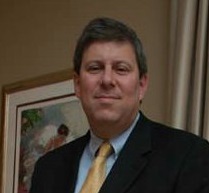
The fine folks at AHCA have a few bones to pick with CMS’ proposed rules on Medicare bundled payments for knee and hip replacements. (Photo by Anatomography, courtesy Wiki Media Commons.)
Bill Myers
Good morning, ProviderNation. The fine folks at AHCA have a few thoughts on a federal proposal to bundle Medicare payments for knee and hip replacements. The full text is here, but the gist of it is “Whoa.”
“While AHCA supports the concept of bundled payments generally,” association Senior Vice President Mike Cheek says in a letter to the fine folks at CMS, “we believe it is too early for CMS to propose a mandatory model and too premature to design a model with the hospital as the bundle owner.”
Providers are concerned that they’ll be locked out of the new system, which could have a devastating impact on rehab patients, Cheek says. Part of it is the language of the rulemaking notice itself, which puts all power in the hands of hospitals, and part of it is that CMS is over-reliant on its Five-Star rating system.
If CMS goes ahead with the kind of bundled payment system they’re proposing, Cheek says, “two modifications are critical.”
“First, CMS should explicitly affirm that the model protects beneficiary freedom-of-choice of provider, and CMS should not grant any waivers that allow hospital steering or closed networks,” he says. “Second, while AHCA applauds CMS’ willingness to grant a waiver of the three-day rule for [skilled nursing center] admission, we do not believe it is appropriate to tie the use of the waiver to performance on the Five-Star Rating system.”
‘Model 3 Can Work’
As to the first concern, CMS has only just started to test out roles for post-acute care providers in its so-called Model 3 demonstration. “Early results indicate that Model 3 can work,” Cheek says. “However, additional testing and evaluation are needed. The research, to date, has not provided any conclusive evidence on which types of bundles are successful.”
As written, CMS’ proposed rules would simply hand off the bundles to hospitals, which is no guarantee of better outcomes or better savings, Cheek says.
“We believe that savings should come from efficient delivery of services and care coordination, rather than from merely shifting the site of care,” he writes.
Five-Star Fluctuations
Any chance of waiving Medicare’s three-day hospital stay requirements are of course good news for providers and patients, but Cheek says that CMS is risking care by pegging the three-day waivers to the Five-Star system. In part, this is because the rating system itself—updated monthly—is, by definition, unstable.
Data show that, every month, a three-star skilled nursing center has a 15 percent chance of dropping down to two stars or lower in the next 12 months, Cheek says. (And that’s before anyone considers CMS’, ahem, controversial decision to rebase its rating system.)
“Not only will this level of fluctuation impact beneficiary choice of provider, but it also will make implementation of the program logistically challenging for hospitals as they try to establish a network of exclusive three-star or higher SNFs,” Cheek says.
Under the proposed rules, nearly nine out of 10 skilled nursing centers could be closed to patients in the Monroe, La., area in any given month, Cheek says. In other metro areas, the numbers of potentially closed centers are: more than four-fifths of skilled nursing centers for the Lubbock, Texas, area, three-fifths in the Gainesville, Fla., area, more than half in the Kansas City area, nearly half in the Las Vegas and St. Louis markets, and nearly two-fifths in the Seattle market, Cheek says.
I, For One, Salute Our New Insect Overlords
In other news, mad props to the fine folks at the Florida Health Care Association, who’ve just selected a new batch of overlords.
Topping the list are President Joe Mitchell, of Summit Care in Tallahassee (with a tip o’ the cap to Past President Deborah Franklin of Dover’s Florida Living Options); Senior Vice President John Simmons of Avante at Jacksonville Beach; Secretary Marco Carrasco, of West Gables Health Care Center in Miami; and Treasurer Alex Terentev, of Lake Mary’s Gulf Coast Health Care.
The Twitterweb
And, finally, here’s a pleasant reminder that our next #ProviderChats is coming Monday, Sept. 14. Monday, besides being Rosh Hashanah (and a hearty l’shana tovah to us, everyone), is the start of National Assisted Living Week.
We’ve got a star-studded line-up of experts who’ll be taking consumers’ questions on mind, body, and spirit. Be (virtually) there, or be (actually) square.
Bill Myers is Provider’s senior editor. Email him at wmyers@providermagazine.com. Follow him on Twitter, @ProviderMyers.











